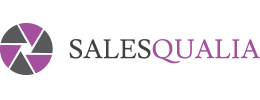03, 2017

What are critical success factors for SaaS applications? #Q&A
Question:
What are the key success factors (like simplicity vs complexity, usability, marketing, pricing, buzz etc.) for SaaS products?
Answer:
Couple of notes on my answer:
- I’m answering this questions from the perspective of enterprise SaaS applications, though principally I think the answers probably apply to single user SaaS.
- I’ll eschew the predictable answers such as a sound UI, quick load times, reliable “up” times.
- Individual User Utility: This refers to specific utility for individual users in an enterprise.
For example, let’s say that your SaaS software identifies potential leads for sales teams. It then routes the sales leads to individual sales people within your target clients’ sales organization. If so, your SaaS application should have some exclusive functionality for each salesperson that would require a separate login/seat license which otherwise, would significantly devalue the SaaS application’s utility.
If the application only routes leads to a dashboard of some kind, the client could have a single-seat license to monitor and direct leads to each salesperson. But… if the SaaS application enabled each salesperson to log to their individual Salesforce account and provide research capabilities for the inbound lead that saves time in call preparation, then the application has “Individual User Utility.”
Have a Sales Question?
Grab a time to chat with Scott here.
The application may have a “Group Product” of some kind so that might offer limited functionality and a lower price point, but the benefits to upgrading to single-user license across the enterprise should be clear.
For single-user applications, the equivalent would be the inability to share accounts, or at least it should be inconvenient to share accounts. This means each user sets their Preferences so that each user’s view upon login is unique to them.
- Scalable Support: A strong library of FAQs and how-to videos that enable users to self-educate before requiring direct customer service interaction. Some may suggest user forums/community where users can interact and solve each other’s problems, though this is very, very difficult to build.

- Individual Support: … but when needed, the application should provide the ability for users to receive individual support when needed.
- Market Responsiveness: As the application develops, there should be a regular upgrade of functionality without each new feature requiring an increase in service/subscription fees. It’s SaaS, so inherently there aren’t “versions” like Windows 3.1 to Windows 95. Users are outsourcing their software and utilizing SaaS with the expectations that upgrades of features and functionality are normal and expected.
Over time, there may be a major product derivative that would require a new subscription or license type, but day-to-day normal upgrades should be included in the business model.
- Solve a clear business process problem – Either the SaaS application should replace a relatively manual process (i.e. software that replaces spreadsheets) or integrate other applications that don’t, but should interact with each other (i.e. Rapportive)
I know there’s more… Interested to see what others think.
**This Q&A article was originally posted on Quora. Check out Scott’s Quora page here.
